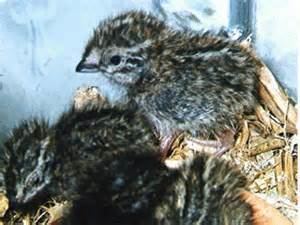Scientific name Ortyxelos meiffrenii Higher classification Ortyxelos Order Shorebirds | Family Turnicidae Phylum Chordata Rank Species | |
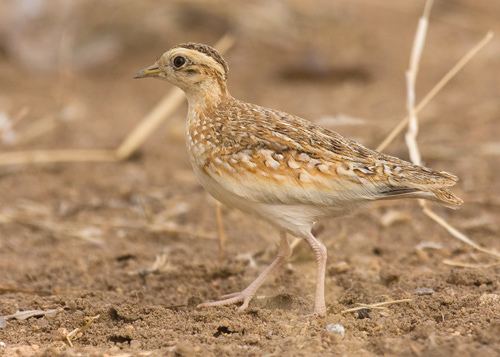 | ||
Genus OrtyxelosVieillot, 1825 Similar Shorebirds, Sumba buttonquail, Chestnut‑backed buttonquail, Madagascan buttonquail, Red‑chested buttonquail | ||
The lark buttonquail, lark-plover or quail-plover (Ortyxelos meiffrenii) is a species of buttonquail in the family Turnicidae. It is monotypic within the genus Ortyxelos.
Contents
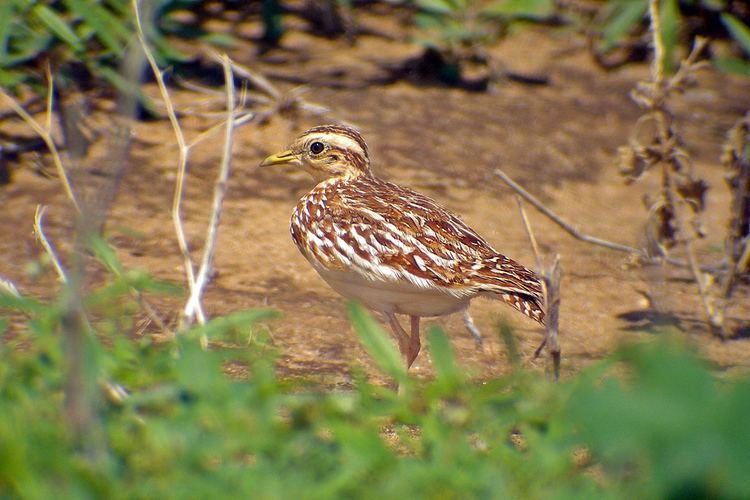
Description
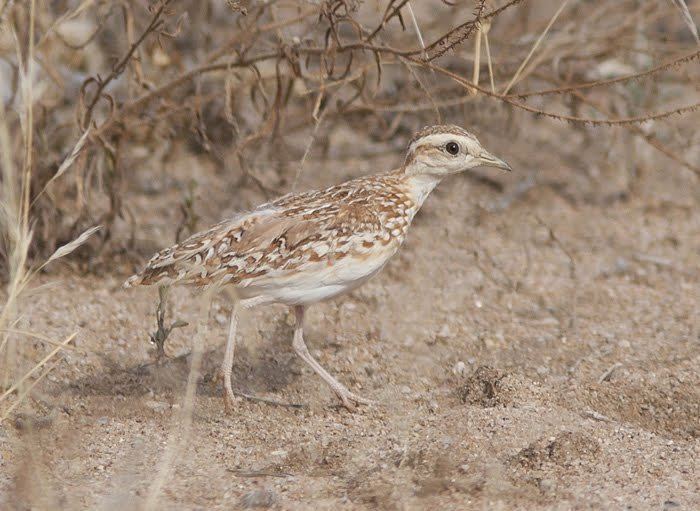
The quail-plover is a small, short-tailed cursorial bird which looks a little like a miniature courser when on the ground. The upperparts are a snady-rufous colour, the underparts mainly whitish but it shows a distinctive wing pattern in flight when the contrast between the white greater coverts and the black white-tipped remiges to form a distinct diagonal band on the upperwing. Its fluttering flight is rather lark-like. The female is slightly darker than the male while the juvenile is paler.
Habits and habitat

The quail-plover is usually found singly or in pairs in dry grassland and thorn scrub. It is rather skulking preferring to move stealthily through grass but also running around like a courser in the open. Tends to crouch down and hide when approached and flushes only when the observer is almost on top of it and then flies off with a jerky undulating flight. It breeds during the dry season and moves north ahead of the rains It tends to be more active at night and to call with a soft low whistle like the wind going through a pipe during moonlit nights.
Distribution
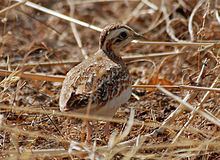
The Sahel from southern Mauretania and northern Senegal eastwards to northern Cameroon and southern Chad into South Sudan and southern Sudan with separate population in northern Benin and coastal Ghana, with another in Uganda, Kenya and Ethiopia.
Conservation status
The quail-plover has an extremely large range, its population trend is not known, the population is not understood to be undergoing a sufficiently rapid decline to approach the thresholds under the population trend criterion while the population size has not been quantified so the species is evaluated as Least Concern.
